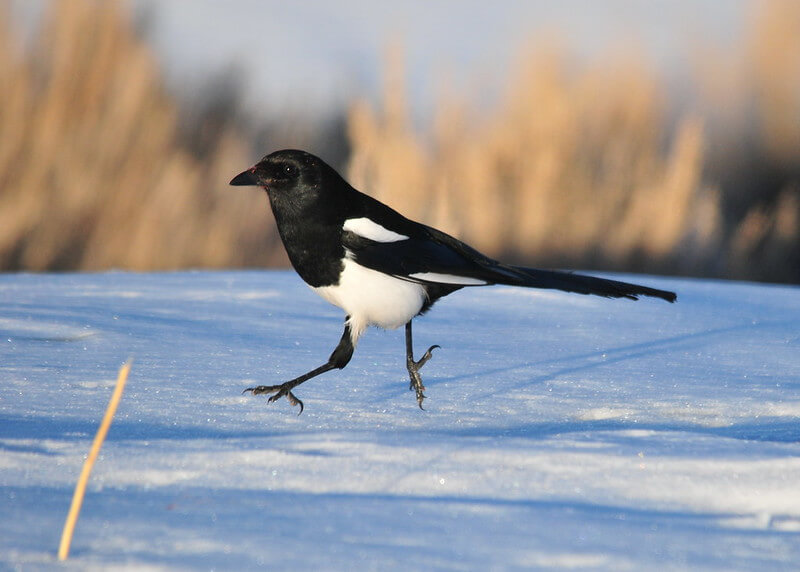The Bird Count Of Christmas And ‘One Magpie Dancing’
By Brian Williams
Broadcast 12.24 & 12.27.2019

Black-billed Magpie. Photo by Tom Koerner, USFWS.
Listen:
Once the last trickle of migrating birds passed through Montana in early October, my binoculars sat idle for a few weeks, until anticipation of Christmas bird count season drew me back outside. Christmas bird counts are remarkable events. All across North America groups of individuals head out into the woods and fields to carry on a tradition more than a hundred years old: counting birds within a 15-mile-wide circle. It’s mostly a time to meet folks who share the joy of watching birds and to scour familiar territory for rare finds, but the remarkable span of data collected on these counts has proven enormously valuable to scientists evaluating long-term population trends of birds in North America.
In mid-December, my wait was over, and I joined a group of about twenty other volunteers to participate in the Ninepipes Christmas bird count. My section of the circle lay between the Mission Mountains, dusted with snow this fine, clear morning, and the center seam of the valley, Highway 200. Chuck and Rene Willet and I patrolled the grid of section roads, hunting for Gyrfalcons and Golden Eagles and other interesting birds. Instead of big raptors, though, we mostly found magpies. Don’t get me wrong; I find magpies remarkable. They belong to the most intelligent family of birds, the corvids, which also includes jays, crows and ravens. Scientists have observed New Caledonian Crows crafting hooks to skewer grubs from a tree, and Western Scrub Jays re-hiding caches of food if they were observed stashing the food the first time. And magpies themselves (we have the Black-billed Magpie here in Montana) have some remarkable, poorly-understood behaviors, such as their habit of gathering and parading around a dead companion in a kind of funeral march.
But despite their interesting behaviors, tallying magpie after magpie quickly becomes a tedious process when you’re hoping for an “exciting” bird.
Just before lunch, we pulled up to a dead end at the base of the foothills and looked out into a plowed field to see … yet another magpie. This one, though, was hopping and flashing its wings in jerks, as if trying to perform a mad waltz, so we drew up our binoculars for a closer look. We could see then that it was corralling a small rodent, a vole I guessed, as it danced from foot to foot. A second magpie soon swept in to join the first (was it attracted by the bizarre dance?) and helped round up the vole. The first magpie was shortly able to reach down and grab the cornered rodent by the head. Its prize, though, was short-lived. The second magpie made a quick snatch to steal the wriggling vole and flew off into the ponderosa pines.
When we gathered in the Ninepipes Lodge later that afternoon to tally results, witnessing that remarkable hunt stood out as a highlight of our day. I read later that mammals can comprise up to 10% of a magpie’s diet; I even found one story of a magpie that pierced a squirrel’s skull with a well-placed jab. But I’ve only rarely seen a prey capture in action, and to witness this wild hopping magpie hunt was one of the gifts of this Christmas bird count season.
Every week since 1991, Field Notes has inquired about Montana’s natural history. Field Notes are written by naturalists, students, and listeners about the puzzle-tree bark, eagle talons, woolly aphids, and giant puffballs of Western, Central and Southwestern Montana and aired weekly on Montana Public Radio.
Click here to read and listen to more Field Notes. Field Notes is available as a podcast! Subscribe on iTunes, Google Play, or wherever you listen to podcasts.
Interested in writing a Field Note? Contact Allison De Jong, Field Notes editor, at adejong [at] montananaturalist [dot] org or 406.327.0405.
Want to learn more about our programs as well as fun natural history facts and seasonal phenology? Sign up for our e-newsletter! You can also become a member and get discounts on our programs as well as free reciprocal admission to 300+ science centers in North America!












